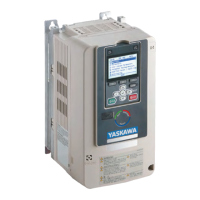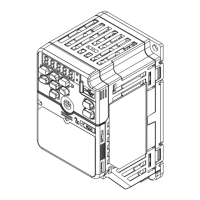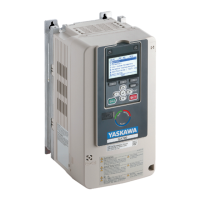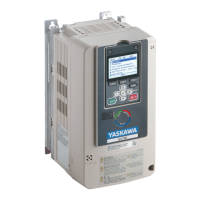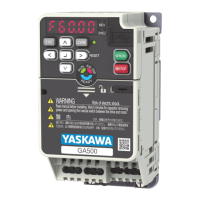1.3 Features and Advantages of Control Methods
26 YASKAWA SIEPC71061737B GA800 Drive Technical Reference
1.3 Features and Advantages of Control Methods
This drive has 9 available control methods from which to select for different applications. Table 1.4, Table 1.5, and
Table 1.6 give information about the features of each control method.
Table 1.4 V/f and CL-V/f Features and Advantages of Control Methods
Control method selection
V/f Control
(V/f)
V/f Control with Encoder
(CL-V/f)
Notes
Controlled Motor Induction Motor -
Parameter Setting A1-02 = 0 A1-02 = 1 -
Basic Control V/f
Closed loop V/f control with speed
correction
-
Main Applications
General-purpose variable speed control to
connect more than one motor to one drive.
High-precision speed control with encoders
on machines
-
PG Option Card Not necessary Necessary (PG-B3 or PG-X3) -
Maximum Output Frequency 590 Hz 400 Hz -
Speed Control Range 1:40 1:40
This is the range of variable control.
When you connect and operate motors in this mode,
think about the increase in motor temperature.
Starting Torque 150% / 3 Hz 150% / 3 Hz
This is the motor torque that the drive can supply at low
speed during start-up and the related output frequency
(rotation speed).
You must think about drive capacity and motor capacity
when a large quantity of torque is necessary at low
speed.
Auto-Tuning
*1
Rotational and Line-to-Line Resistance
(usually not necessary)
Rotational and Line-to-Line Resistance
(usually not necessary)
Automatically tunes electrical motor parameters.
Torque Limits
*1
No No
Controls maximum motor torque to prevent damage to
machines and loads.
Torque Control
*1
No No
Directly controls motor torque to control tension and
other parameters.
Droop Control
*1
No No Sets load torque slip for motors. Distributes motor loads.
Zero Servo Control
*1
No No
Locks servos without an external position controller to
prevent movement caused by external force.
Speed Search
*1
Yes -
Immediately estimates (or detects) motor speed and
direction when coasting to a stop to quickly start-up the
drive without stopping the motor.
Automatic Energy-saving
Control
*1
Yes Yes
Automatically adjusts the voltage applied to motors to
maximize motor efficiency for all load sizes.
High Slip Braking (HSB)
*1
Yes Yes
Increases motor loss to let the motor decelerate faster
than usual without a braking resistor. Motor
characteristics have an effect on this function.
Feed Forward Control
*1
No No
Compensates effects of the system inertia to increase the
speed precision when the load changes.
KEB Ride-Thru Function
*1
Yes Yes
Quickly and safely stops the motor during power loss
and automatically starts operation at the previous speed
when restores power without coasting the motor.
Overexcitation Deceleration
*1
Yes Yes
Sets the V/f higher than the setting value during
deceleration to increase motor loss and decrease
deceleration time.
Overvoltage Suppression
Function
*1
Yes Yes
Adjusts speed during regeneration to prevent
overvoltage.
*1 Note these points when you use this function:
• When you can decouple the motor and machine for a test run, use Rotational Auto-Tuning. You must make adjustments to the control
in the range where there is no vibration in the machine after Rotational Auto-Tuning.
• Motor loss increases during overexcitation braking and high-slip braking. Use a maximum braking frequency of 5% ED and a
maximum braking time of 90 seconds. After you start high-slip braking, you cannot restart the motor until it stops. Use overexcitation
braking to decelerate over a shorter time at a pre-determined speed.
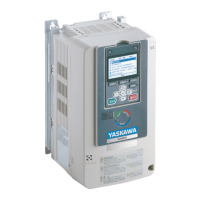
